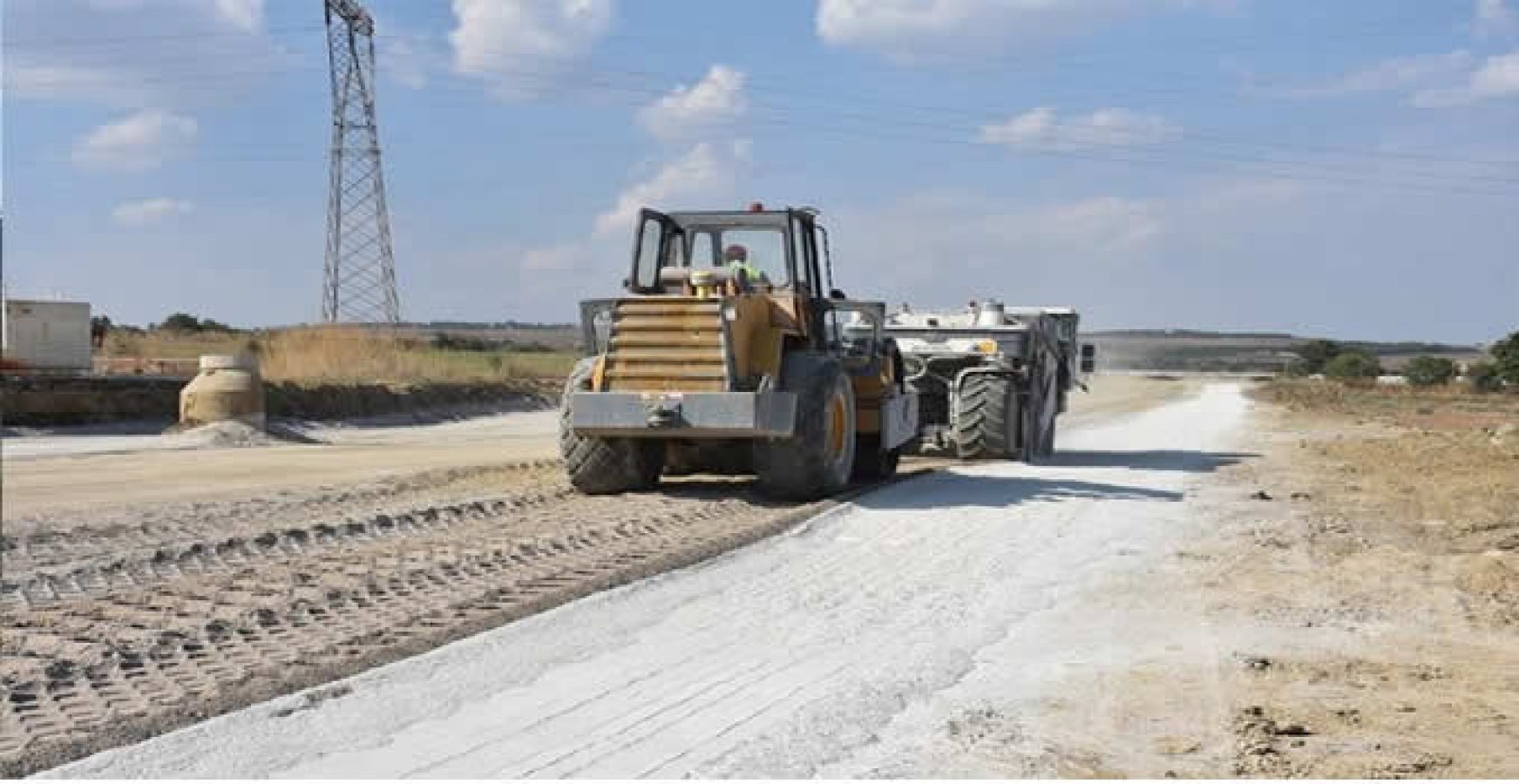Soil Stabilization
What is Soil Stabilization?
Soil stabilization is an improvement process applied to land where roads, buildings, or other structures are planned to be built, aimed at enhancing the soil's durability, strength, and load-bearing capacity. This method enables the construction of long-lasting and reliable structures by improving the characteristics of weak soils. Soil stabilization is the process of altering, strengthening, and enhancing the soil’s properties. Typically used in weak or problematic soils, this method plays a critical role in increasing success in engineering projects.
Purpose of Soil Stabilization
The primary goal of soil stabilization is to improve the soil’s load-bearing capacity and stability, thereby allowing for the construction of safer and more solid structures. The benefits of soil stabilization include:
- Increasing Load-Bearing Capacity: Structures are subjected to heavy loads during both the construction and usage phases. Soil stabilization strengthens the soil's properties, enabling it to safely bear these loads.
- Enhancing Durability: The stabilization process makes the soil more resistant to external factors. This allows structures to endure environmental factors for a longer period.
- Ensuring Structural Safety: Soil stabilization enhances the safety of structures, preventing possible collapses or deformations. This is especially crucial in road construction and infrastructure projects.
Soil Stabilization Methods
Soil stabilization can be performed using various techniques and materials. These techniques are chosen based on the type of soil, the characteristics of the structure, and the project requirements. The most common soil stabilization methods are as follows:
1. Mechanical Stabilization
Mechanical stabilization involves compaction and homogenization of the soil. In this method, heavy machinery is usually used to increase the soil's density and reduce its void ratio. Mechanical stabilization is commonly preferred, particularly in road construction. During the application, water is added to the soil to achieve better compaction.
2. Chemical Stabilization
Chemical stabilization is a method that involves altering the soil's chemical composition. In this method, lime, cement, or other chemical substances are used to improve soil properties. For instance, lime can be used in clayey soils to break down the soil's plasticity. Cement, on the other hand, gives the soil strength and increases its load-bearing capacity.
3. Bituminous Stabilization
In this method, bitumen or asphalt is added to the soil to reduce water permeability and increase soil durability. Bituminous stabilization is often preferred in road construction and airport runways. Bitumen binds soil particles together, creating a more compact structure.
4. Electrochemical Stabilization
Electrochemical stabilization is a method of improving soil properties using an electric current. This technique controls the amount of water in the soil and reduces stickiness, making it effective, especially in soils with high water content.
Advantages and Disadvantages of Soil Stabilization
Soil stabilization provides numerous benefits for construction projects but also has some disadvantages. Below are the advantages and disadvantages of this method:
Advantages
- Long-Lasting Structures: Soil stabilization extends the lifespan of structures, reducing maintenance and repair costs.
- Economic Solution: In weak soils, soil stabilization provides an economical solution without the need for additional excavation or fill processes.
- Environmentally Friendly: By reusing the existing soil without re-excavation, an eco-friendly improvement is achieved.
Disadvantages
- High Cost: Some stabilization methods, especially chemical and electrochemical methods, may be more costly compared to others.
- Application Difficulty: Stabilization may be challenging in some soils, increasing labor time and cost.
- Environmental Impact: Some materials used in chemical stabilization methods can harm the environment.
Key Considerations in Soil Stabilization
Before applying soil stabilization, the soil's condition and the project requirements should be carefully analyzed. Choosing a stabilization method without conducting a soil survey can lead to undesirable results. Furthermore, the quality of the materials used is crucial; low-quality materials may prevent achieving the desired level of stabilization. Therefore, stabilization processes should be conducted by expert teams.
Applications of Soil Stabilization
Soil stabilization is used in various fields. The most common application areas are as follows:
- Road Construction: Soil stabilization is frequently used to enhance the durability of road infrastructure, resulting in longer-lasting roads.
- Building Foundations: Soil stabilization is applied to create solid foundations, especially for large structures.
- Airport Runways: Stabilization prevents soil wear on runways where heavy loads take off and land.
- Dam and Pond Construction: Stabilization is applied in dams and ponds to create a waterproof soil.
In conclusion, soil stabilization is a vital process in modern construction projects that enables the construction of safe, durable, and long-lasting structures. This stabilization process, carried out through various methods, provides economic and environmental benefits. Enhancing soil properties not only increases structural safety but also allows for the construction of strong and reliable structures, even on weak soils.

